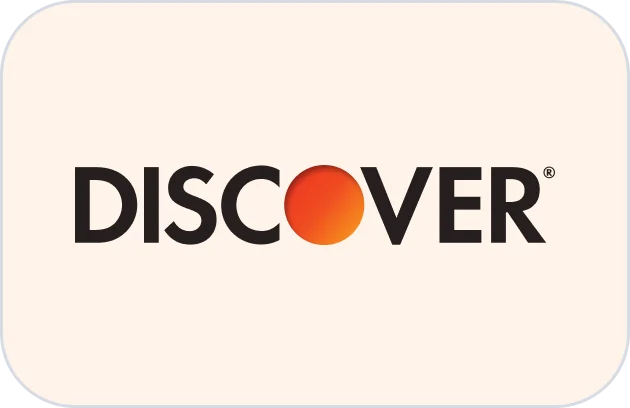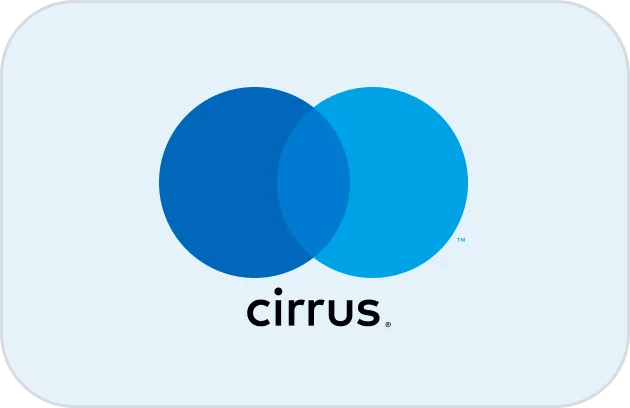U.S. outbound is brutal: saturated buyer inboxes, carrier spam filters, patchy data quality, and regulations that can end a quarter with one mistake. The answer isn’t “more dials.” It’s relentless precision: a predictive dialer that obeys TCPA/Do-Not-Call boundaries by default, routes locally to cut latency, senses intent and emotion in the first seconds, and proves revenue with defensible analytics. This field guide shows how top U.S. teams wire a dialer into a system—routing, compliance, coaching, analytics, and architecture—so connects climb, risk falls, and leaders have the confidence to scale.
Everything here is built on platform patterns you’ve already seen work across reliability, routing, and AI coaching—grounded in the same principles as U.S. cloud contact architectures, predictive routing models, real-time coaching, and AI-first QA—stitched together for outbound sales.
| Control | How It’s Implemented | Why It Matters |
|---|---|---|
| 1) National DNC & State DNC Scrubbing | Automated pre-dial suppression against latest registries. | Removes prohibited numbers before pacing logic starts. |
| 2) Consent Registry (Express/Implied) | Per-number consent flags synced from CRM forms. | Proves lawful basis; routes non-consent to manual outreach. |
| 3) Opt-Out Capture & Global Suppression | Voice IVR “press 9” + SMS STOP → instant suppression. | Stops all future automated outreach on the spot. |
| 4) Local Time Windows | Geo-resolve area code → restrict to allowed hours. | Prevents wrong-time violations across U.S. time zones. |
| 5) State-Level Quiet Hours | Overrides national hours with stricter state rules. | Respects the strictest applicable boundary. |
| 6) Call Attempt Caps | X/day, Y/week, Z/month enforcement by lead cohort. | Avoids harassment patterns and carrier flagging. |
| 7) Agent-Available Pacing | Predictive engine dials only when agents free in N sec. | Eliminates dead air; protects abandonment thresholds. |
| 8) Abandon Rate Governor | Hard stop when abandon rate approaches threshold. | Prevents silent calls that drive complaints. |
| 9) Carrier Reputation Management | Rotate clean local DIDs, register brand caller ID. | Improves answer rates; reduces “spam likely.” |
| 10) Manual Dial Mode for Non-Consent | Agent-initiated click-to-call with disclosures. | Segregates high-risk contacts safely. |
| 11) Recording & Redaction Controls | Pause/resume on card data; field-level masking. | PCI/PII safe by design. |
| 12) Do-Not-Call by Brand/Product | Suppression scoped to product line when required. | Honors granular consumer preferences. |
| 13) Consent Expiry & Renewal | Auto-expiry with renewal prompts via email/SMS. | Prevents “stale consent” pitfalls. |
| 14) Short Abandon Message | Compliant message if agent unavailable. | Reduces consumer confusion; documents attempt. |
| 15) Multichannel Disclosure Prompts | Coach agent to read state-specific lines. | Standardizes legally required language. |
| 16) Warm Transfer Identity Preservation | Keeps verified identity across transfers. | Avoids re-auth; limits risk from re-collection. |
| 17) Audit-Grade Event Log | ConversationStarted→Consent→Routed→Outcome chain. | Defensible history for regulators and counsel. |
| 18) List Source Provenance | Capture UTM/source & proof of consent. | Isolates risky vendors; improves CPL quality. |
| 19) Lead Cooling-Off Logic | Pause reattempts after negative sentiment. | Prevents escalation to complaints. |
| 20) Windowed Callbacks | Schedule 1:00–1:15 PM; priority at window start. | Raises answer rate; honors promises. |
| 21) Sensitive-Use Playbooks | Healthcare/finance scripts and consent types. | Aligns with sector compliance expectations. |
| 22) SMS/WhatsApp Opt-In Sync | Channel-specific consent stored per number. | Avoids cross-channel consent assumptions. |
| 23) State Residency Data Rules | Tag CA/VA/CO for privacy flow differences. | Supports U.S. privacy law patchwork. |
| 24) AI Risk Phrases Watchlist | Flags threats, profanity, legal triggers. | Routes to supervisor; reduces exposure. |
| 25) Abandoned-Call Cooling | Auto-delay before reattempt after abandon. | Prevents perceived spam flurries. |
| 26) Do-Not-Originate Guard | Block high-risk ranges from dialer. | Improves call authenticity, ASR. |
| 27) Per-Campaign Legal Profiles | Templates for different states/products. | Ships fast without re-writing rules. |
| 28) One-Click Legal Export | CSV/PDF for complaint or audit response. | Saves days of manual assembly. |
1) The U.S. Outbound Reality: Speed Without Regret
American buyers screen aggressively, carriers police aggressively, and plaintiffs’ firms watch for mistakes. You win by combining speed and constraint. Speed comes from predictive pacing, low latency, and instant context in the agent UI. Constraint comes from guardrails that make the right choice the default: consent-aware dialing, quiet-hour enforcement, and abandonment governors.
This is why the dialer cannot be a stand-alone toy. It must plug into a complete contact system that shares identity, sees historic promises, and can move channels without losing the SLA clock. Teams doing this report higher connects, fewer complaints, and fewer disputes about “what really happened.”
2) Architecture for Relentless Uptime (and Real Connects)
Your dialer is only as fast as your path to the PSTN. U.S. leaders run carrier diversity, regional edges, and automatic failover—precisely the patterns in zero-downtime call architectures and cloud elimination of downtime. Local caller ID pools are registered and protected; media paths are measured for jitter and MOS in real time. If a trunk degrades, traffic drains in seconds without human hands.
On the enterprise side, cloud PBX provides DID lifecycle management and region-tagged numbers for caller-ID trust. For multi-brand sellers, PBX tenants isolate identities and compliance flags while the dialer orchestrates pacing centrally. The net effect: fewer “spam likely” warnings, faster connection setup, and a dialer that can actually keep up with predictive math.
3) Predictive Routing & Pacing That Stays Legal
Predictive dialers forecast two things: agent availability and connect probability. Do it well, and agents spend more time talking to live buyers. Do it wrong, and you trip abandonment or run afoul of consent rules. The fix is baked into predictive routing: layer value/intent scoring, consent flags, time windows, and a strict governor on the abandon rate. The dialer breathes with the floor—throttling instantly when occupancy dips or quality degrades.
Windowed callbacks add an unfair edge: when the buyer picks a 15-minute slot, you place that call at the window start with priority routing. Add stickiness—keep the lead with the same rep for N minutes—and you compound trust and conversion. It’s how outbound stops feeling like interruption and starts feeling like service.
4) AI That Helps in the Moment (Not After the Loss)
Most teams “coach” the past. Winners coach the present. With real-time coaching, the dialer UI nudges disclosures, empathy phrases, and objection-handling scripts as signals unfold. Tone spikes? The UI softens language. Payment details? The UI auto-prompts a redaction check. Meanwhile, AI-first QA listens to 100% of conversations for the five behaviors customers actually feel: Greet/Verify, Discover, Resolve, Next Step, Compliance.
The result: fewer late surprises, fewer mystery rubrics, and cleaner feedback loops. When coaching and QA converge, agents stop guessing and start compounding behaviors that correlate with revenue/contact—not vanity scores.
5) Data, Integrations & The Revenue Proof
Dashboards don’t buy headcount; proof does. That proof lives where dialer events join CRM, billing, and support outcomes. Every outbound event—ConsentCaptured, Routed, Connected, CallbackCompleted, Dispositioned—streams to the warehouse with stable IDs. Calls that turn into invoices or contracts are visible in one query. This is the same events thinking that powers robust analytics elsewhere; see how reliability analytics wire up in SIP→AI future architectures.
The glue is integration. Use the patterns in 100 time-saving integrations to auto-log outcomes, schedule follow-ups, send agreements, and push knowledge or content. Pair with the feature ROI lens from ROI-ranked features, and you’ll invest in the controls that actually move conversion or compliance—nothing else.
6) 120-Day Rollout & The Pitfalls to Dodge
Days 1–14 (Foundations): Stand up local edges and carrier diversity. Register caller IDs. Import DNC/consent registries. Turn on abandon governor and quiet hours. Publish team-wide playbooks aligned to your PBX migration path so legacy lines don’t sabotage reputation.
Days 15–45 (Throughput + Quality): Enable predictive pacing with agent-available windows; ship windowed callbacks. Launch real-time coaching for disclosures and empathy. Calibrate AI-QA on a shared set of calls weekly. Keep a hard rule: two routing or scripting tweaks per day based on live signals.
Days 46–90 (Cohorts + Personalization): Segment by state and vertical. Introduce multilingual scripts or regional cues where relevant to your book. Move repeat objections into guided replies. Scale integrations for agreements, billing, and calendar links using the vertical use-case library.
Days 91–120 (Business Proof + Scale): Publish the exec page with revenue/contact, cost/contact, and abandon rate trend. Instrument “promises kept” on callbacks and proposals sent. Prepare an RFP checklist that mirrors survivability, compliance, and analytics export—then run a live failover drill.
Pitfalls: (1) Deflection without dignity (don’t trap prospects in bots). (2) Vanity metrics (if it can’t be reproduced from events, it doesn’t go to execs). (3) Over-pacing (abandon spikes → reputation damage → lower connects). (4) Script sprawl (weekly pruning or die). (5) Compliance as tribal knowledge (defaults must enforce law). To keep the GTM spine aligned, revisit the loss-prevention principles that underpin retention-grade service.
7) FAQs — Short Answers That Change Outcomes
How do we keep abandonment compliant at scale?
Use an abandon governor that slows pacing when abandonment approaches threshold, and require a short abandon message when unavoidable. Predictive windows should track real-time agent occupancy, not a static guess. If occupancy dips, throttle now—don’t “monitor and hope.”
What’s the fastest way to improve answer rates?
Register and rotate local caller IDs, adopt windowed callbacks, and drain traffic away from degraded trunks automatically. The reliability patterns in downtime-eliminating stacks translate directly into more live connects.
Where should AI coach, and where should it stay quiet?
Coach disclosures, empathy, and objection patterns in real time; generate wrap-up summaries and dispositions after the call. Avoid autonomous promises or policy improvisation. See real-time coaching for practical boundaries that work.
How do we prove legal posture without drowning in paperwork?
Log every event with stable IDs and keep one export path. The model used in AI-first QA—100% coverage, reproducible evidence—carries over to compliance. When complaints arrive, you answer in minutes, not weeks.
Is manual dialing dead?
Manual dialing still matters for non-consent leads and sensitive use cases—but for consented sales motions, see the playbook in the death of manual dialing. Predictive, consent-aware systems will outperform and out-protect every time.
What KPIs actually correlate with revenue/contact?
Connect rate, callback kept rate, proposal-within-24h, and “promises kept.” Layer these atop the reference set in the 2025 metric benchmarks and you’ll separate volume noise from value signal.
Which features deliver the fastest ROI?
Agent-available pacing, windowed callbacks, local ID registration, abandon governors, and click-to-sign integrations. Prioritize with the ROI lens from features ranked by ROI so you buy conversion—not glitter.








